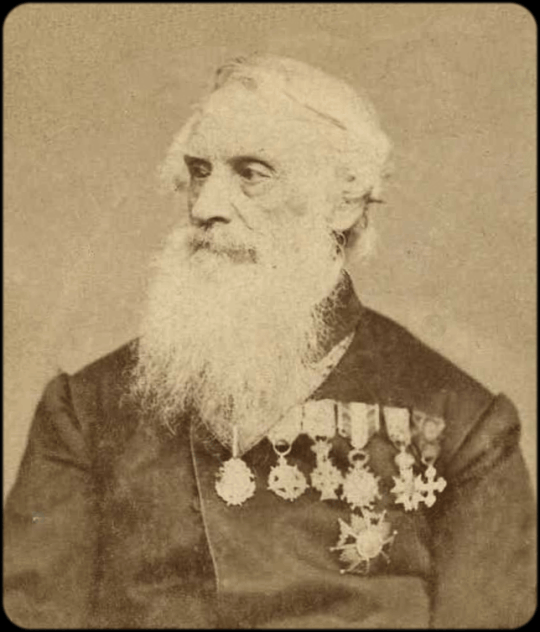‘Samuel Morse’
J. Gurney & Son
c.1866
Samuel Morse is well-known as the co-inventor of the communication system that bears his name. He was born in Charlestown, Massachusetts in 1791 and died at New York in 1872. Less well-known is the fact that he was also an accomplished artist and gained entry into the Royal Academy of Art in 1811. He also believed that slavery was a practice sanctioned by God. The stereograph shows Morse with the medals he was awarded in his lifetime. For example, the large medal under the top six was the Order of Isabella the Catholic, given to him in 1859.









